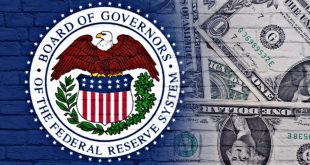The US economy currently presents a complex picture: a robust labor market coupled with the looming shadow of trade tensions. Raphael Bostic, President of the Federal Reserve Bank of Atlanta, recently highlighted this precarious balance, emphasizing the heightened uncertainty surrounding the economic outlook. This uncertainty, largely driven by tariffs, requires a nuanced approach to monetary policy.
Tariffs and the Uncertainty Quagmire
Tariffs introduce a significant layer of complexity to economic forecasting. Quantifying their impact is challenging, as the effects depend on a multitude of factors, including the specifics of implementation, the scope of application, and the potential for retaliatory measures. Bostic stressed the need for continuous engagement with businesses to gauge their responses to evolving conditions and to explore potential economic scenarios. This underscores the importance of remaining adaptable and data-dependent in the face of unpredictable trade policies.
Inflation Remains the Focal Point
Despite the uncertainties, the Federal Reserve’s primary focus remains on curbing inflation. The target of 2% inflation is seen as crucial for maintaining the institution’s credibility. While recent data suggests progress, with core PCE inflation projected to fall, the path to the 2% target is not expected to be linear. Bostic noted the potential for housing inflation to decline, contributing to the overall disinflationary trend. The Fed’s commitment to achieving its inflation target remains unwavering.
Labor Market Strength and Future Policy
The US labor market continues to demonstrate surprising resilience, supporting a tighter labor market than previously anticipated. This strength provides businesses with access to the necessary workforce, minimizing labor constraints. However, the Fed is carefully monitoring the impact of previous interest rate cuts on the economy. The increasing uncertainty necessitates a cautious approach to policy, avoiding abrupt shifts in direction. Bostic indicated a willingness to pause rate adjustments, emphasizing the need to observe how the economy evolves. He also provided insights into his view of the nominal neutral rate, placing it between 3% and 3.5%.
Economic Growth and the Atlanta Fed’s Forecast
The Atlanta Fed’s GDPNow model has consistently provided accurate growth estimates. The model’s recent upward revision of first-quarter 2025 GDP growth to 3.9% further underscores the economy’s current momentum. This follows their accurate projection of 2.3% growth for the fourth quarter of the previous year, demonstrating the model’s reliability. This robust growth, coupled with a strong labor market, presents a positive backdrop, but the uncertainties surrounding trade and inflation require careful navigation.
The US economy is at a critical juncture. While the labor market remains robust and growth projections are positive, the uncertainties introduced by trade tensions demand a cautious and data-dependent approach to monetary policy. The Federal Reserve’s focus on achieving its 2% inflation target remains paramount, and its commitment to adaptability in the face of evolving conditions will be crucial for maintaining economic stability.
 Noor Trends News, Technical Analysis, Educational Tools and Recommendations
Noor Trends News, Technical Analysis, Educational Tools and Recommendations





